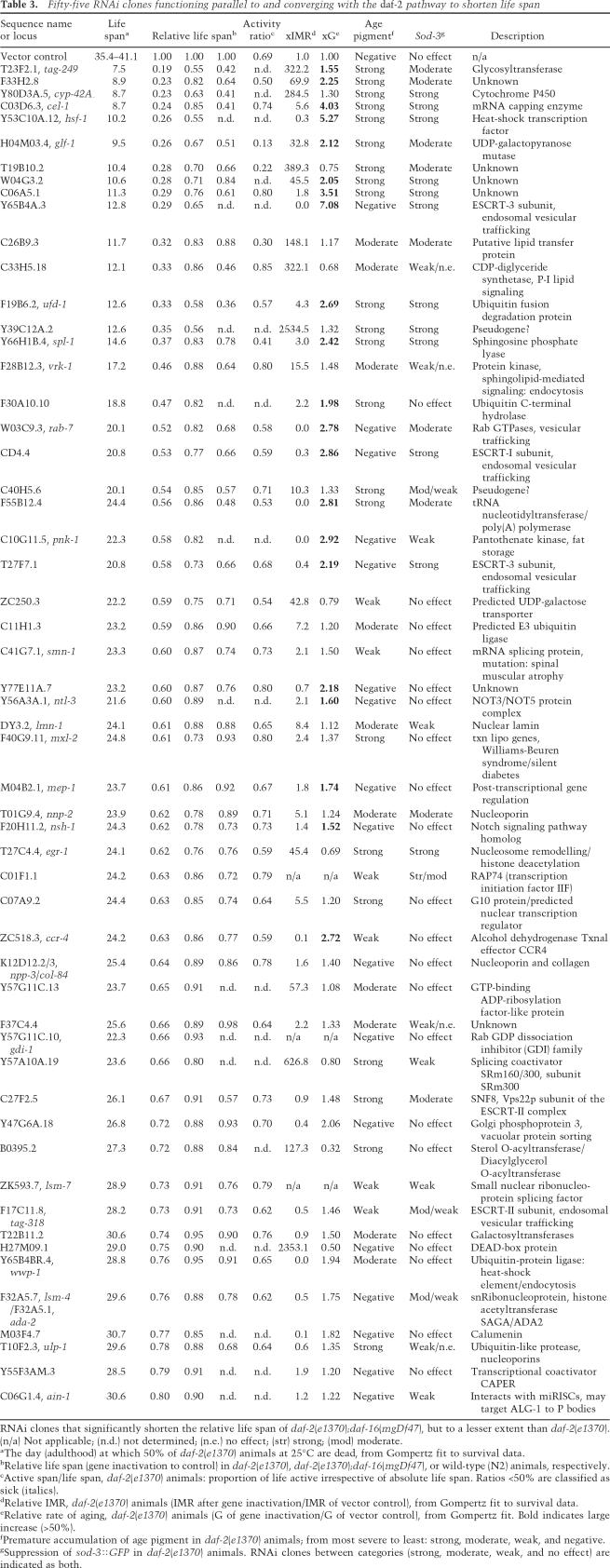Table 3.
Fifty-five RNAi clones functioning parallel to and converging with the daf-2 pathway to shorten life span
RNAi clones that significantly shorten the relative life span of daf-2(e1370);daf-16(mgDf47), but to a lesser extent than daf-2(e1370). (n/a) Not applicable; (n.d.) not determined; (n.e.) no effect; (str) strong; (mod) moderate.
aThe day (adulthood) at which 50% of daf-2(e1370) animals at 25°C are dead, from Gompertz fit to survival data.
bRelative life span (gene inactivation to control) in daf-2(e1370), daf-2(e1370);daf-16(mgDf47), or wild-type (N2) animals, respectively.
cActive span/life span, daf-2(e1370) animals: proportion of life active irrespective of absolute life span. Ratios <50% are classified as sick (italics).
dRelative IMR, daf-2(e1370) animals (IMR after gene inactivation/IMR of vector control), from Gompertz fit to survival data.
eRelative rate of aging, daf-2(e1370) animals (G of gene inactivation/G of vector control), from Gompertz fit. Bold indicates large increase (>50%).
fPremature accumulation of age pigment in daf-2(e1370) animals; from most severe to least: strong, moderate, weak, and negative.
gSuppression of sod-3∷GFP in daf-2(e1370) animals. RNAi clones between categories (strong, moderate, weak, and no effect) are indicated as both.

